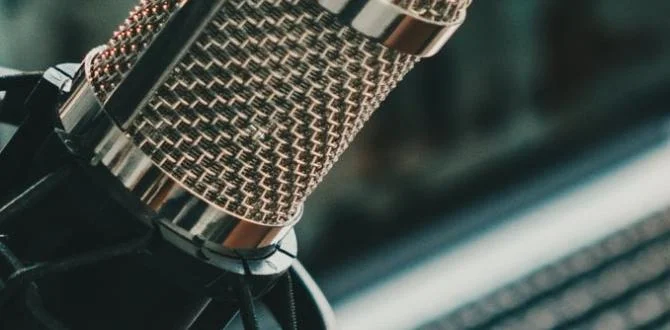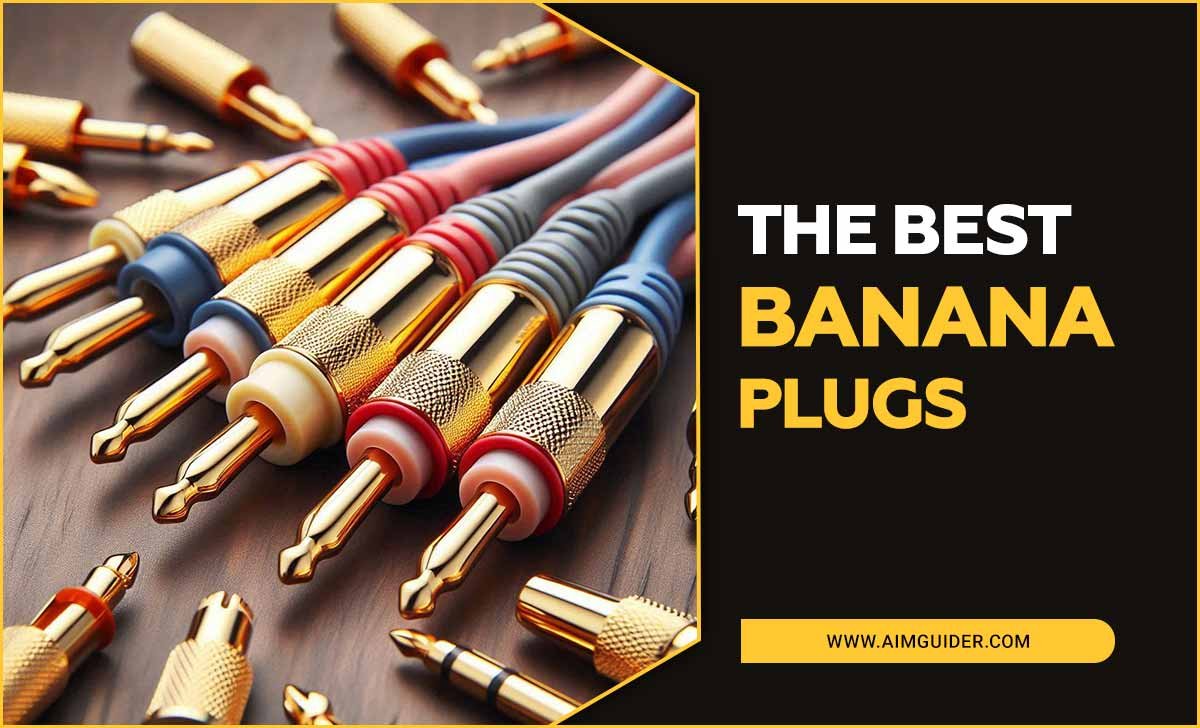Have you ever listened to a podcast and wondered why some sound so much better than others? The secret often lies in the podcast microphone used. Choosing the right microphone can make a huge difference. It can turn an ordinary voice into something captivating.
Imagine sitting down to record a great story. You want your voice to shine, right? That’s where the best quality podcast microphone comes in. It picks up every word clearly, allowing your audience to connect better.
Did you know that a good microphone can even filter out background noise? This means your listeners hear you and not the distractions around you. In this article, we will explore the top choices for podcast microphones. Get ready to discover which ones stand out in quality!
Discover The Best Quality Podcast Microphone Options

Discovering the Best Quality Podcast Microphones
When starting a podcast, the right microphone can make a huge difference. Did you know that even the best ideas can sound dull without clear audio? Top-quality podcast microphones capture every detail, making your voice sound crisp and professional. Look for features like noise cancellation and easy USB connectivity. Choosing the right mic can enhance your storytelling, engaging listeners from the start. Why settle for less when you can sound great?Understanding Podcast Microphone Types
Dynamic Microphones: Pros and Cons. Condenser Microphones: Pros and Cons.When choosing a podcast microphone, it’s important to know about different types. Dynamic microphones are great for loud sounds. They are sturdy and often used for live events. However, they might not capture soft sounds as well.
- Pros: Durable, good for loud environments.
- Cons: Less sensitive to quiet sounds.
Condenser microphones are more delicate. They pick up a wide range of sounds, making them perfect for studios. But they can also catch unwanted noise.
- Pros: Great sound quality, sensitive to details.
- Cons: Fragile, can pick up background noises.
What microphone is best for recording podcasts?
For capturing clear voices, a condenser microphone is often best. They offer detailed sound, which is perfect for podcasts.
Why choose a dynamic microphone?
A dynamic microphone is better for noisy environments. You get clear sound without background noise, which is ideal for live events.
Key Features of a Quality Podcast Microphone
Frequency Response Range. Sensitivity and Sound Pressure Level.A great podcast microphone has key features that make it special. One important feature is the Frequency Response Range. This tells us how well the microphone captures different sounds. A good range is from 20 Hz to 20 kHz. Next, we have Sensitivity and Sound Pressure Level. A quality microphone should pick up quiet sounds clearly while also handling loud noises without distortion.
- Frequency Response Range: 20 Hz – 20 kHz
- Sensitivity: Should capture quiet sounds
- Sound Pressure Level: Can handle loud noises well
What is Frequency Response in a Podcast Microphone?
Frequency response is the range of sounds a microphone can pick up. This range is usually measured in Hertz (Hz) and tells podcasters how clear the sound will be.
Why is Sensitivity Important?
Sensitivity determines how well a microphone captures soft sounds. This is key for recording voices and subtle noises in your podcast.
Top Brands for High-Quality Podcast Microphones
Shure: Renowned for Professional Quality. Rode: Innovative Features and Versatility.Two top brands stand out in podcast microphones. Shure is famous for its professional quality. Podcasters trust it for clear sound. Next, Rode offers innovative features. Its microphones are versatile and easy to use, making them great for all types of recordings.
- Shure: Known for durability and sound clarity.
- Rode: Popular for its user-friendly design and range of options.
What are the benefits of using Shure and Rode microphones?
Shure microphones are reliable for professional sound. They filter out background noise well. Rode microphones are versatile and user-friendly. They fit any podcasting style.
Budget Considerations for Podcast Microphones
EntryLevel Options: Best for Beginners. MidRange Picks: Balancing Quality and Cost.Starting a podcast? Good news! You don’t need a treasure chest of money to sound great. Entry-level options can make you sound like a pro without making your wallet cry. Think of them as the trusty bicycle before you get the shiny sports car of microphones.
When you’re ready to step it up, mid-range picks come into play. These mics offer a fine balance of quality and cost, making them great for serious podcasters. They are like having a lemonade stand that suddenly turns into a thriving business!
| Type | Features | Price Range |
|---|---|---|
| Entry-Level | Decent sound quality, easy to use | $50 – $100 |
| Mid-Range | Better sound clarity, more features | $100 – $300 |
So, whether you’re just starting or ready to move up, there’s a podcast microphone that fits your budget. Remember, even the best podcasters started with a simple mic and a dream!
Microphone Accessories for Optimal Performance
Pop Filters: Reducing Plosives. Shock Mounts: Minimizing Vibrations.When it comes to perfecting your podcast sound, the right accessories are key. A pop filter is your secret weapon against plosive sounds (those pesky “P” and “B” noises). It helps smooth things out and keeps your listeners happy. You’ll sound like a professional instead of a balloon getting popped!
Next up, shock mounts are the superheroes of sound quality. They stop vibrations from shaking your mic, so your voice comes through crystal clear. Imagine recording in a bouncy castle—sounds fun, but not in a podcast!
| Accessory | Function |
|---|---|
| Pop Filter | Reduces plosives |
| Shock Mount | Minimizes vibrations |
Using these accessories will give your podcast the polish it deserves, turning your amateur recordings into professional masterpieces!
Setting Up Your Podcast Microphone
Placement Techniques for Best Sound Quality. Connection Options: USB vs XLR.To get the best sound from your podcast microphone, placement matters. Keep it close, about six inches from your mouth, and make sure it’s aimed at your voice. This helps capture your magnificent voice while keeping background noise to a minimum. When choosing a connection, consider USB for simplicity or XLR if you’re feeling fancy. USB is plug-and-play, while XLR can give you better sound quality with the right gear. Here’s a quick comparison of both options:
| Connection Type | Pros | Cons |
|---|---|---|
| USB | Easy setup, affordable | Limited sound quality |
| XLR | Professional sound, more control | More expensive, complex setup |
Choosing the right mic and connection can make your podcast shine. Remember, good sound is like putting sprinkles on a cupcake—totally worth it!
Common Podcast Microphone Mistakes to Avoid
Poor Environment Choices. Neglecting Audio Levels and Monitoring.Believe it or not, where you record is super important! If you’re in a noisy room, it’s like cooking pasta in a swimming pool—defeats the purpose, right? Choose a quiet space to avoid distracting sounds. Next up, don’t ignore your audio levels. Recording too loud can make your voice sound like a robot at a rave! Always check your levels and listen while you record. It’s like tasting your food as you cook. Happy podcasting!
| Mistake | Solution |
|---|---|
| Poor Environment Choices | Choose a quiet, soft space! |
| Neglecting Audio Levels | Monitor your levels as you record! |
Reviews of Top 5 Podcast Microphones
Comparison of Features and User Feedback. Ideal Use Cases for Each Model.Choosing the right podcast microphone can be tough. Each model has unique features and user feedback. Here’s a quick look:
- Blue Yeti: Great sound quality. Users love its versatility. Perfect for home studios.
- Audio-Technica AT2020: Clean audio with a sturdy build. Best for interviews.
- Rode NT1: Super quiet and clear. Ideal for professional recordings.
- Shure SM7B: Excellent for vocals. Favored by serious podcasters.
- Samson Q2U: Affordable and good quality. Great for beginners.
Each microphone suits different needs. Consider what fits your style best!
What are the best features to look for in a podcast microphone?
Key features include sound quality, durability, and ease of use. Choose a mic that suits your recording environment.
How do I know which microphone is right for me?
Think about your podcast style. If you interview guests, a versatile microphone is best. If you record solo, look for clarity.
Conclusion
In summary, choosing the best quality podcast microphone makes a big difference. Look for clear sound, good durability, and easy setup. Popular options like USB mics are great for starters. As you grow, consider XLR mics for better sound. Explore reviews to find the right fit for you. Happy podcasting, and keep learning about audio gear!FAQs
Sure! Here Are Five Related Questions On The Topic Of Podcast Microphone Best Quality:Sure! Here are some tips to choose the best microphone for podcasts. First, look for a microphone that picks up your voice clearly. You want a good sound without too much background noise. Next, choose a microphone that’s easy to use. Finally, think about how much you want to spend. There are many great options for different budgets!
Sure! Please provide me with the question you would like me to answer.
What Are The Top Features To Look For In A High-Quality Podcast Microphone?When choosing a good podcast microphone, look for a few important features. First, it should have clear sound quality so you can be heard well. Second, it should have a good pickup range to catch your voice without noise from the background. Also, a microphone that is easy to set up and use is a big plus. Finally, make sure it is durable so it lasts a long time.
How Does Microphone Type (Dynamic Vs. Condenser) Affect Podcast Audio Quality?Dynamic microphones are great for loud sounds. They are tough and good for noisy places. Condenser microphones pick up more details and are better for quiet sounds. If you want clear voices, a condenser mic is a good choice. Choose based on where you will record!
What Are The Best Budget Microphones For Achieving Professional Sound In Podcasting?If you want a good microphone for podcasting that doesn’t cost too much, try the Audio-Technica AT2020. It gives clear sound and works well. Another good choice is the Samson Q2U. It’s easy to use and has a headphone jack. The Rode NT-USB Mini is also nice because it connects right to your computer. These mics help you sound great without spending a lot!
How Important Is Microphone Placement And Positioning For Optimal Audio Quality In Podcasts?Microphone placement and positioning are very important for good sound in podcasts. If you place the microphone too far away, your voice may sound quiet. If it’s too close, it might be too loud or make popping sounds. We should make sure the microphone is at the right distance for clear and pleasant audio. This helps listeners enjoy our podcasts more!
Are There Any Specific Brands Or Models Recommended By Experienced Podcasters For Studio-Quality Sound?Yes, some popular brands for studio-quality sound are Shure and Audio-Technica. The Shure SM7B microphone is a favorite among podcasters. Another good choice is the Audio-Technica AT2020. Both give you clear and nice sound for your recordings.








